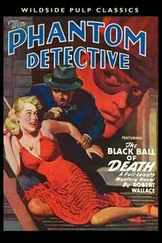In the Middle Ages it rarely paid to get into a wrangle with a monk. The Bishop of Winchester had the last laugh when the time came to enlarge the churchyard of the Cathedral. With polite expressions of regret it was explained that this could only be done by reclaiming a stretch of land between the Cathedral and the High Street which had been granted to the priory by Henry I but subsequently ‘usurped’ by the Mayor, bailiffs and citizens as a site for a market and for bi-annual fairs. In Winchester, it was clear, either the quick or the dead were going to suffer and, if the Church had anything to do with it, it was not going to be the dead.
As in Siena, the plague left Winchester a tangible record of its visit. Edendon had formed grandiose plans for remodelling the west end of the Cathedral and reconstructing the nave in the Decorated style. He completed the demolition work in 1348, pulling down the two massive towers that flanked the Norman front. But when it came to rebuilding, the Black Death removed his labour force and funds ran short. A new west front was hurriedly flung up as a temporary measure until there was time and money to build something which would redound with greater éclat to the glory of Bishop Edendon. So far this makeshift has lasted something over six hundred years and still appears to have plenty of life left in it.
* * *
The plague reached Surrey, the other half of Bishop Edendon’s diocese, a few weeks after Hampshire. March and April seem to have been the worst months. Banstead, four miles east of Epsom, was typical of many of the victims. {284}
The manor had been granted by Edward III to Queen Philippa as part of her dowry. A certain John Wortyng was installed as bailiff but evidently failed to win the confidence of the Queen’s man-of-business. Some years after the Black Death had passed through the manor he claimed an allowance of £ 6 9s. 10d. for rent not paid on vacant tenements. The entry was struck out in his accounts and the sceptical note appended: ‘Cancelled until inquiry is made into how many and what tenements are in the Queen’s hands and for how much he could have answered on the issues of each tenement.’ In the event he seems to have been proved justified. A jury sitting in 1354 found that twenty-seven out of 105 villein holdings had been vacant since the epidemic. It is not unreasonable to deduce that a few others at least had found new tenants during this period and that the original death roll must therefore have included at least a third of Banstead’s villeins.
The Black Death at Farnham has been the subject of a special study. {285} The hundred of Farnham was one of the richest and most populous in the great estates of the Bishop of Winchester. Judging by the Reeve’s records in the Pipe Rolls there was a freakish first visitation of the plague at the end of 1348 which disappeared as mysteriously as it had come early in 1349 and was followed by the main outbreak at the same time as the rest of Surrey a few months later. In the twelve months between September 1348 and September 1349, 185 heads of households died. The ratio between householders and dependants is a subject of some controversy but, for the moment, it will be sufficient to assume that it could be no less than one to three. The total population of the hundred was between three thousand and four thousand; taking a figure half-way between the two, it would seem that some 20 per cent of the inhabitants died.
The paradoxical result of this mortality was that the Bishop of Winchester did very well financially. In a normal year fines paid on the estates of the deceased yielded between £ 8 and £ 20; in the twelve months of the Black Death this soared to £ 101 14s. 4d. As heriots, the head of cattle which the heirs of every dead tenant had to hand over to the landlord, the reeve received twenty-six horses and a foal, fifty-seven oxen, one bull, fifty-four cows, twenty-six bullocks, nine wethers and twenty-six sheep. This windfall had its embarrassing side. Prices had slumped as a result of the plague and the reeve, even after killing and salting some of the oxen and cows, was forced to convert part of the demesne to pasture for the new herds.
On the debit side there was a substantial drop in rents; either because the tenants were dead or because conditions were so difficult that all or part of the rent was remitted by the landlord. But, as on most of the manors of the Bishop, labour services were more important than a money rent. So great was the surplus of labour in Farnham immediately before the Black Death that it proved relatively easy to fill the vacancies and get in the harvest without much recourse to specially hired workmen. The three traditional harvest dinners were given for the twenty-four customary workers at a total cost of nine shillings, a figure very similar to that for earlier seasons. In the year in which the Black Death was at its worst, total receipts at Farnham were £ 305; total expenses only £ 43 5s.1¼d.
If this had been the whole story, then Farnham would have had cause to congratulate itself. But though the plague diminished in virulence it was still active. Between September 1349 and September 1350 another 101 head tenants died. By now the dwindling of the population must have meant that the ratio between householder and dependant also diminished but at least another three hundred villagers died. By the end of 1350, especially as a few further cases of plague occurred even in the last months of that year, more than a third of the people of Farnham must have been dead. Forty times in that year it was said that no fine was paid because there was nobody left to inherit. This meant that the cottage and land escheated to the lord; a situation which was profitable enough for the landlord in normal times when there were plenty of spare villeins to take up the tenement but disastrous when all the putative tenants were in their graves. The income from fines fell to £ 36 15s. 10d. and only four heriots were delivered, presumably remitted through charity or because the landlord had too many cattle already. By the end of 1349, fifty-two holdings were lying derelict. Thirty-six of these were filled up rapidly but the remainder proved more difficult. An increased amount of work on the demesne, particularly at harvest time, had to be done by hired labour and wages rose sharply in 1349 and 1350. With the virtual closure of the potters ‘and brick makers’ industry in the neighbourhood, sales of clay and fern fell away to nothing. But even in this year the reeve could still show a reasonable profit on his operations.
It took some years to get things back to normal. Considerable pressure had to be brought on tenants to take up the vacant holdings but in the end all of them were filled. Wages never returned to the 1348 figure, but they soon fell below the inflated level of 1350. A market for clay and fern gradually reopened. Good administration; the support of a rich and powerful landlord and the natural wealth of the land, ensured that the hundred of Farnham, like the greater part of the Bishop’s estates, was never a liability. In spite of the death of every third inhabitant, life and business went on much as before. In this Farnham was no more typical of England as a whole than the many manors already mentioned where the economy collapsed and income fell away to almost nothing. But its resilience was far from being unique or even exceptional. It is important to remember that both kinds of manors existed when seeking to establish a picture of England under the Black Death.
9. LONDON: HYGIENE AND THE MEDIEVAL CITY
AND so the Black Death lapped at the gates of London. Compared with Paris, Vienna, Bruges or Constantinople, London may not have seemed so enormous a metropolis; certainly in architecture, painting and general grace of living Venice and Florence were far ahead. But it was still by a long way the most important commercial and industrial centre of England; three times, at least, as large as its nearest rival. Westminster, just outside the city walls, was the seat of government and of the King.
Читать дальше












